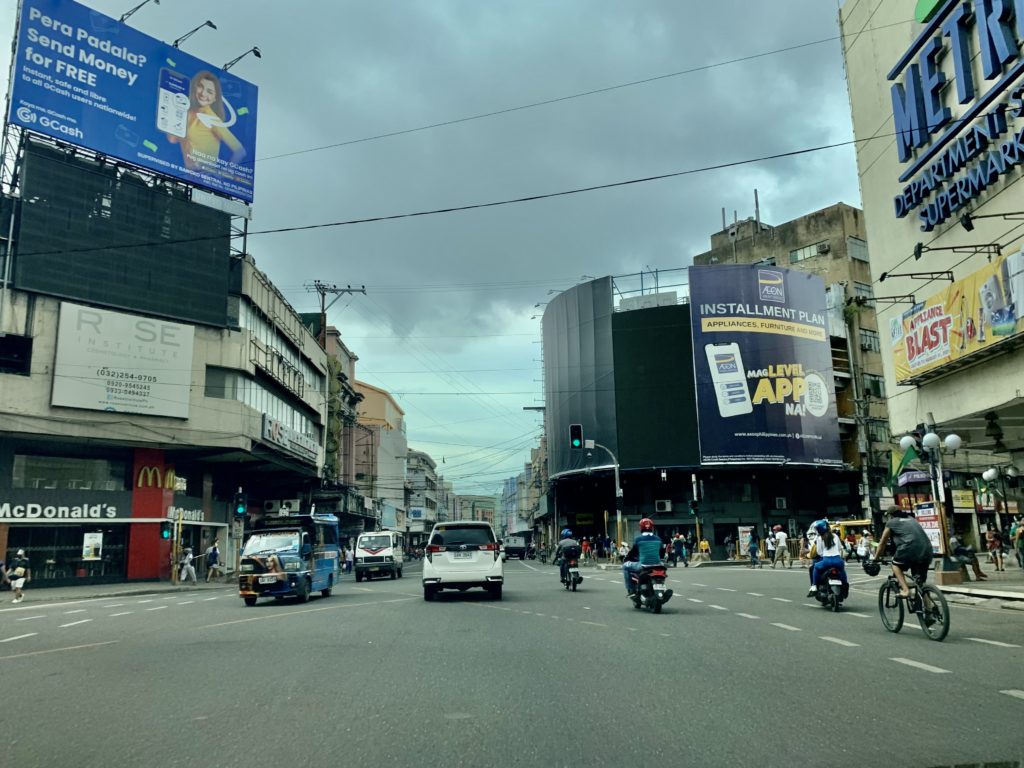

Colon avenue in downtown Cebu Metropolis. CDN Digital photograph | Brian J. Ochoa
CEBU CITY, Philippines — Is Cebu Metropolis a “walkable” metropolis?
This query has just lately began discussions in properties, cafes, and on-line boards, and it’s made extra related and well timed as town authorities advances its plan to pedestrianize the downtown space.
Whereas some hail it as a leap towards sustainability and heritage preservation, others stay skeptical attributable to sensible challenges and the realities of city life.
In June 2024, the Cebu Metropolis authorities unveiled its pedestrianization mission for downtown Cebu. The initiative goals to scale back automobile visitors, increase walkways, and, extra importantly, protect town’s iconic landmarks, such because the Basilica Minore del Sto. Niño and Magellan’s Cross, from air pollution and overcrowding.
READ MORE:
Cebu Metropolis plans downtown pedestrianization with bushes, strolling paths beginning year-end
Cebu Metropolis ‘not prepared for pedestrianization,’ says council’s transport head
Cebu Metropolis crime price dropped by over 83% in 1stquarter of 2024 — CCPO
Metropolis officers believed pedestrianization may rejuvenate the downtown space, boosting native companies by growing foot visitors and drawing folks again from suburban malls.
It extends past heritage preservation and financial revival because it aspires to enhance public security and environmental sustainability.
Regardless of its promising objectives, the mission nonetheless wants to beat hurdles. Cebu Metropolis Councilor James Cuenco, chairman of the Committee on Transportation, Communication, and Different Utilities, expressed doubts about its feasibility, significantly given Cebu’s tropical local weather.
“Attributable to local weather change, [Cebu] experiences excessive climate circumstances. When it’s summer season, it’s highly regarded, and in the course of the wet season, the rain pours closely, resulting in flooding,” Cuenco defined.
Public suggestions, nonetheless, has the identical considerations. In a Fb ballot performed by CDN Digital on November 28, 2024, netizens highlighted a number of obstacles to walkability.
One consumer commented, “Earlier than sobra [ka-safe], karun dli nakasure kanang kasabay nimo og lakaw dunggabon na ka kay lahi na rung panahuna. Magazine sige nakag hunahuna kong buhi pa ba ka maoli sa balay. Mas higher be secure lang jud tawun lisod na run.
(Earlier than, sure, it was actually [safe], now, you can’t be positive concerning the particular person, whom you’re beside or behind you when you are strolling, she or he would possibly stab you as a result of these occasions it’s actually totally different. You typically take into consideration when you would nonetheless be alive when heading residence. It could be higher to be secure, in these occasions, it truly is tough.)
Others pressured the necessity for higher infrastructure and management, with one remarking, “It may work with the suitable self-discipline and infrastructures in place. It takes a whole lot of dedication and motion from everybody.”
Crime stays a priority
Crime stays one other vital concern, regardless of Cebu Metropolis Police Workplace (CCPO) information displaying a ten % lower in general crime incidents as of Could 2024. Lowered instances of theft, theft, and bodily accidents sign progress, however public notion of security lags behind.
Nigel Paul Villarete, city planner and civil engineer, weighed in on the controversy.
He stated that walkability was extremely subjective and would depend upon components like distance, pathway high quality, and warmth.
He recognized areas resembling IT Park and Osmeña Boulevard as comparatively walkable however talked about the necessity for additional enhancements.
“Osmeña Blvd. is an effective place as a result of there are many bushes and most locations are pretty shaded. We will both plant extra bushes or construct shaded sidewalks. This one, ‘shaded sidewalks,’ I hope the Metropolis would examine and, if doable, present funds for,” he stated.
He lauded the Hyperlink to the Port initiative, a part of the Cebu Bus Fast Transit (BRT) mission funded by the World Financial institution and Agence Française de Développement (AFD). Nevertheless, he urged town to increase and maintain such efforts, suggesting devoted funds within the metropolis’s annual funds for pedestrian-friendly infrastructure.
Growing inhabitants, automobile depend
Villarete additionally identified that Cebu’s growing inhabitants and automobile depend had been outpacing town’s capacity to construct new roads.
He warned towards over-reliance on flyovers and elevated expressways, which he described as non permanent fixes exacerbating automobile dependency.
“Our roads are getting extra congested, and no extra new roads are being constructed. The whole lot’s rising—our inhabitants, the variety of vehicles/automobiles—however our capacity to construct extra roads is constrained by each lack of area and lack of funds,” Villarete cautioned.
As a substitute, he advocated for environment friendly mass transportation techniques and walkability enhancements as long-term options to mobility and congestion points.
“The one and finest answer to our mobility is nice and environment friendly public transportation and to enhance as a walkable metropolis,” he concluded.
Learn Subsequent


:no_upscale()/cdn.vox-cdn.com/uploads/chorus_asset/file/25765343/usa_today_21536169.jpg?w=360&resize=360,180&ssl=1)







:no_upscale()/cdn.vox-cdn.com/uploads/chorus_asset/file/25765813/2186881828.jpg?w=120&resize=120,86&ssl=1)



